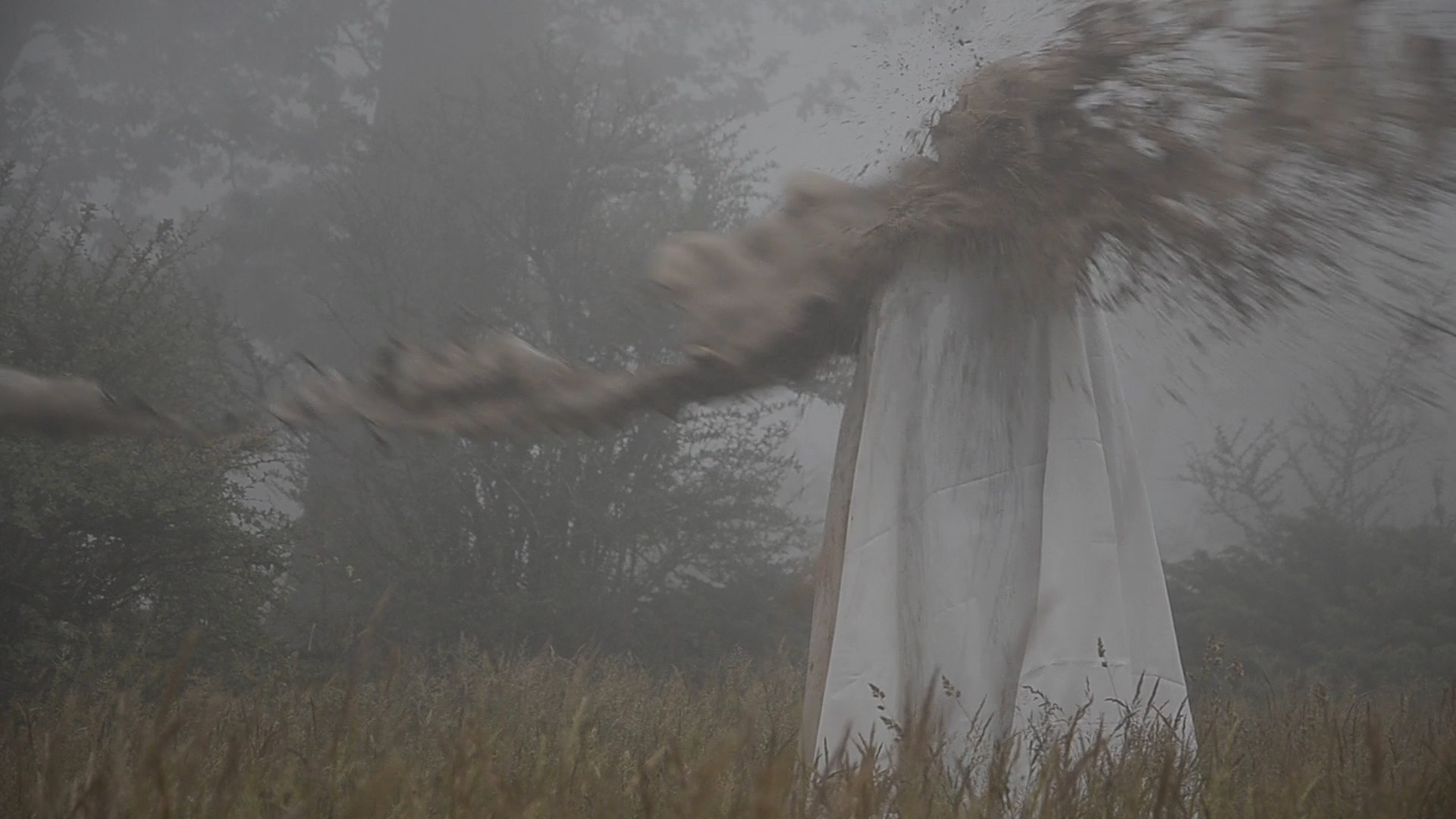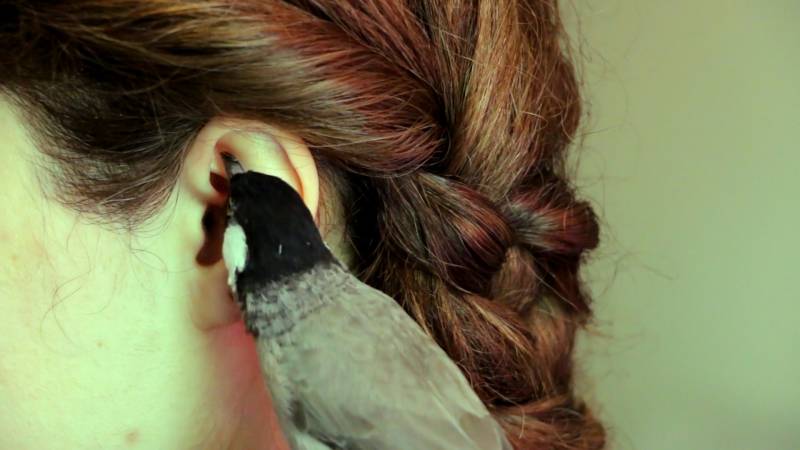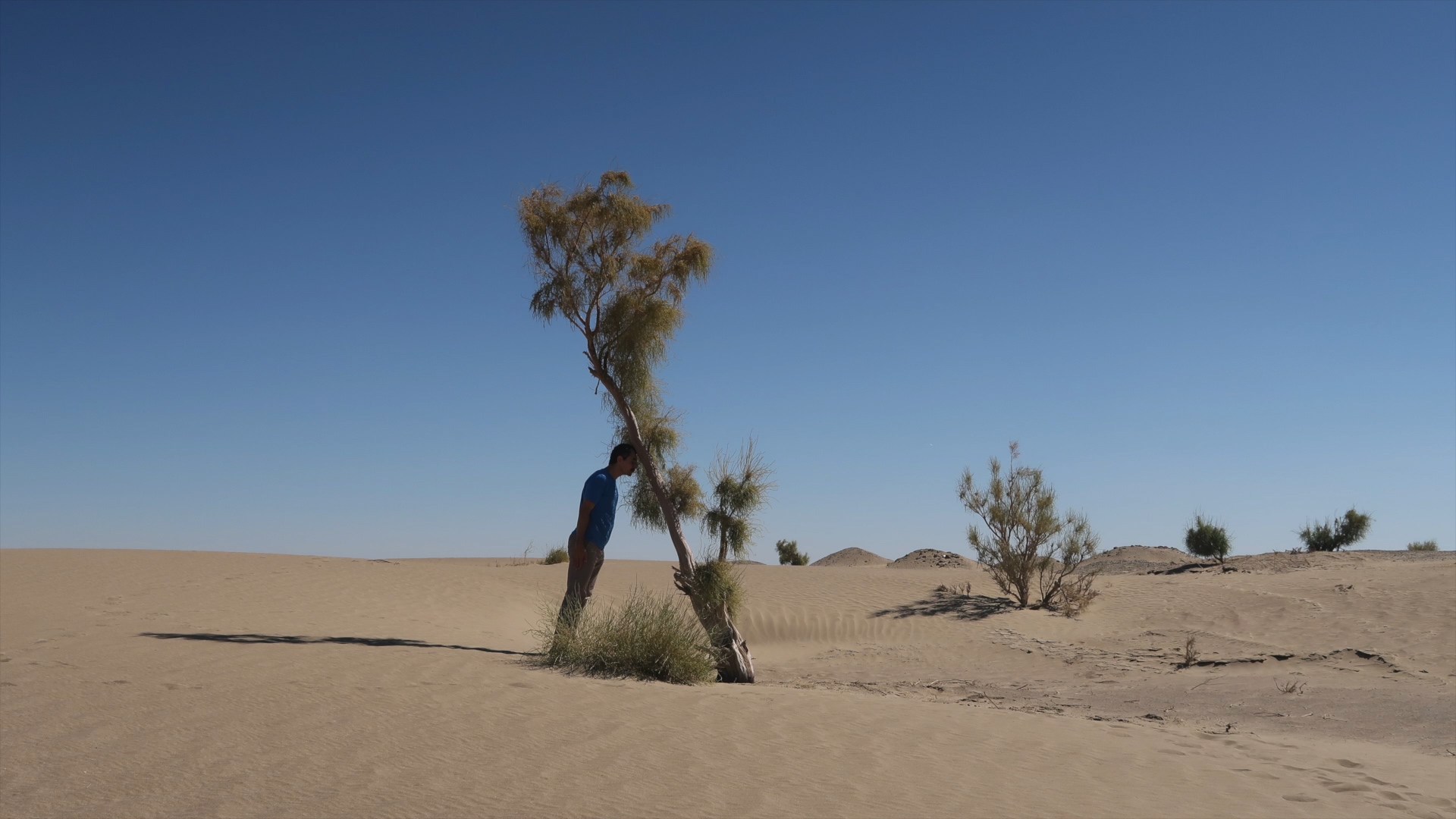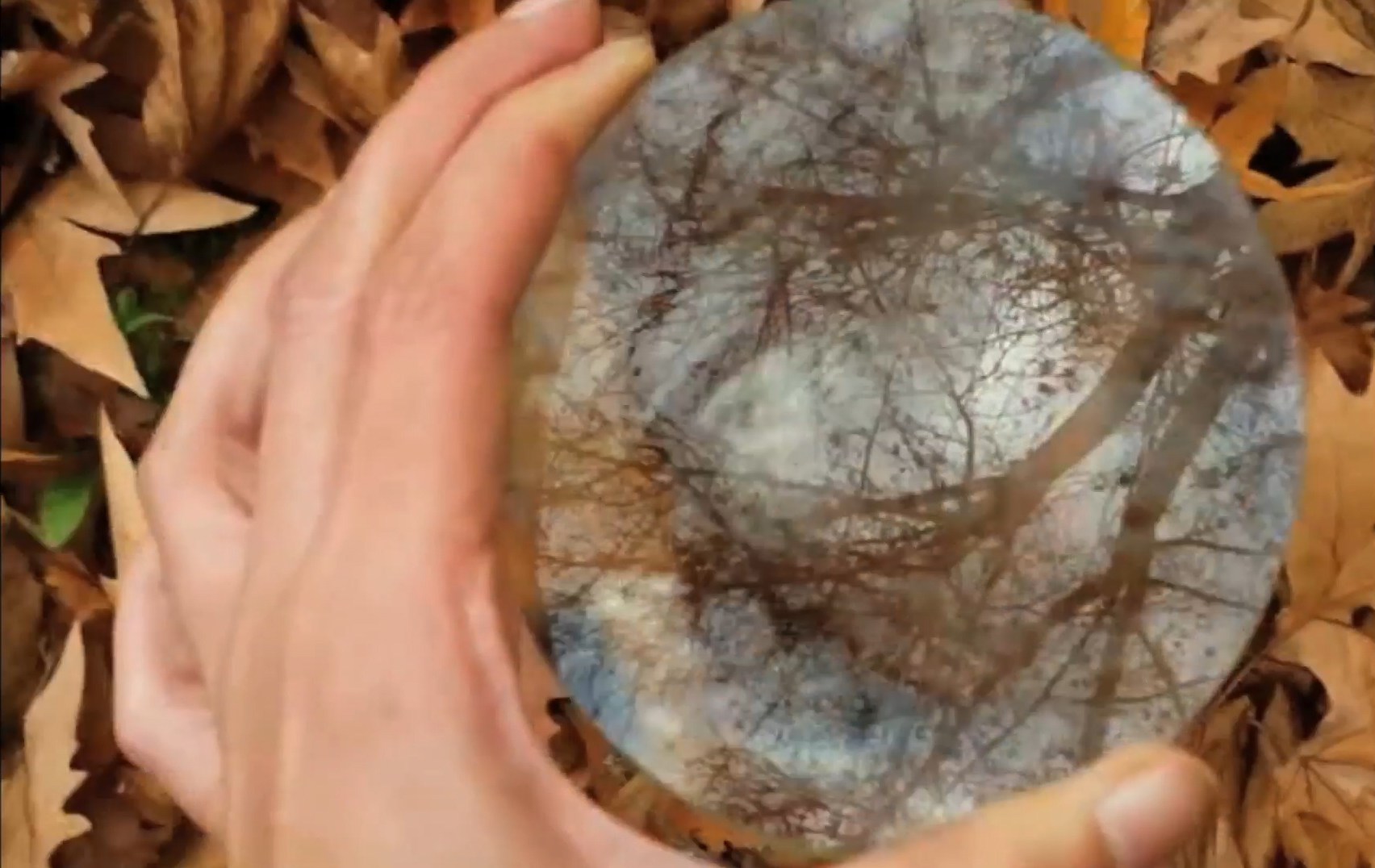San Francisco’s Peephole Cinema is so unassuming I accidentally walked past it twice. But that’s part of the magic of this unostentatious (and miniature) screening space, established in 2013 by artist Laurie O’Brien and run today by Sarah Klein: its ability to blend in with its surroundings. Three doors up from 26th Street, about three feet above ground level, a dime-sized peephole in the side of the purple-painted staircase to 280 Orange Alley is a portal to other worlds.
That transportative feeling is even stronger with the cinema’s current program. Curated by local artist Minoosh Zomorodinia, Hofreh (Persian for “hole,” “cavity” or “eye socket”) presents six silent, experimental short videos from contemporary Iranian artists. Each one is a study in effective brevity, none longer than a minute, and all tell beautifully composed stories of identity, gender and human relationships to nature.

Viewed in January 2020, just days after the United States killed Iranian Maj. Gen. Qassem Soleimani, amid chatter about “World War III” and anti-war protests, this short-term and small-scale program deals in specificity. Hofreh is six videos from six artists, on loop 24 hours a day. It presents the concerns of artists, ordinary Iranian civilians, who we rarely get to hear from when gross overgeneralizations, glossed-over histories and terrifying threats rule the airways.
The program opens with a literal splash in Tara Goudarzi’s Offering. Action comes near the end of the 30-second video, and it occurs suddenly (potentially violently) as what looks like dark mud splashes across the artist, who stands still in a white veil. In a statement about the Offering series, which Goudarzi performs and documents in a variety of natural settings, she writes of the veil as a companion: “We have always been together, ever since I was nine, sometimes out of divine love and sometimes out of hatred.” The offering seems to be her long relationship with this garment, which she now enjoys for “its purity, and its plainness, its whiteness.”
A few videos later in the loop, Nooshin Naficy’s A Stone Embryo appears as the most direct complement to Goudarzi’s short. Instead of nature “acting” on a lone female figure, this video features a woman in motion. But even as she climbs a rock formation to cradle a stone, the camera pulls back, shrinking her figure against the dramatic landscape.





